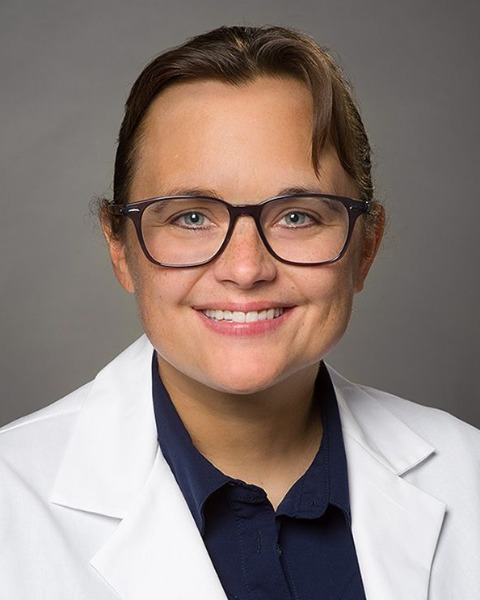Hospital Medicine: Education
Hospital Medicine 3
489 - Improving Resident Communication During Patient Deterioration Events Using SBAR: Needs Assessment Survey and Follow-up
Publication Number: 489.221

Lisa Awe, MD (she/her/hers)
Pediatric Hospital Medicine Fellow
University of Florida - Jacksonville
Saint Johns, Florida, United States
Presenting Author(s)
Background:
An integral part of resident training is responding to acute patient deterioration events (PDEs) on the pediatric ward. Efficient, accurate relay of information is paramount during PDEs. During monthly rapid response reviews, we discovered that patient handovers are lacking consistent formatting and critical details. Review of nursing literature suggested that the use of situation, background, assessment, and recommendations (SBAR) during PDEs improves patient outcomes.
Objective: Our global aim was to improve care given to patients experiencing acute deterioration events at our institution by enhancing resident communication with incorporation of SBAR. We surveyed resident confidence and attending perception of resident competence in using SBAR to establish baseline data as a prelude to a quality improvement project.
Design/Methods: We adapted surveys on SBAR from the literature to fit our study question. We completed cognitive interviews to ensure question construct validity. The final survey was administered via REDCap (see Figure 1) to attendings and residents in May 2022, and once again in November 2022 to residents after providing interventions around using SBAR. We compared attending to resident responses on the first survey, and resident responses over time, using Fisher’s exact test, with a p value of 0.05 considered significant. We treated “always” and “usually” as positive responses regarding perceptions of residents and attendings. For resident surveys over time, we used “always” as positive due to the goal of residents always using SBAR format for handover during PDEs.
Results:
We had a response rate of 49% (24/49) for attendings and 58% (24/43) for residents on the May survey and 39% (18/46) for the November survey. We found that attendings felt the residents were giving the situation first more often than the residents perceived they were giving it (p=0.017). We found no other significant differences (Table 1).
Conclusion(s):
We noted a trend towards more use of SBAR between the two resident surveys, though the results were not significant. Of note, the second resident survey had a low response rate and there is a possibility of a type II error due to study being underpowered. We plan to continue educational interventions, with repeat surveys in Spring 2023. As a next step we are also attempting to have rapid response team members record resident behavior during PDEs and to evaluate event reports for SBAR formatting as more robust outcome measures. .png)
.png)
.png)
